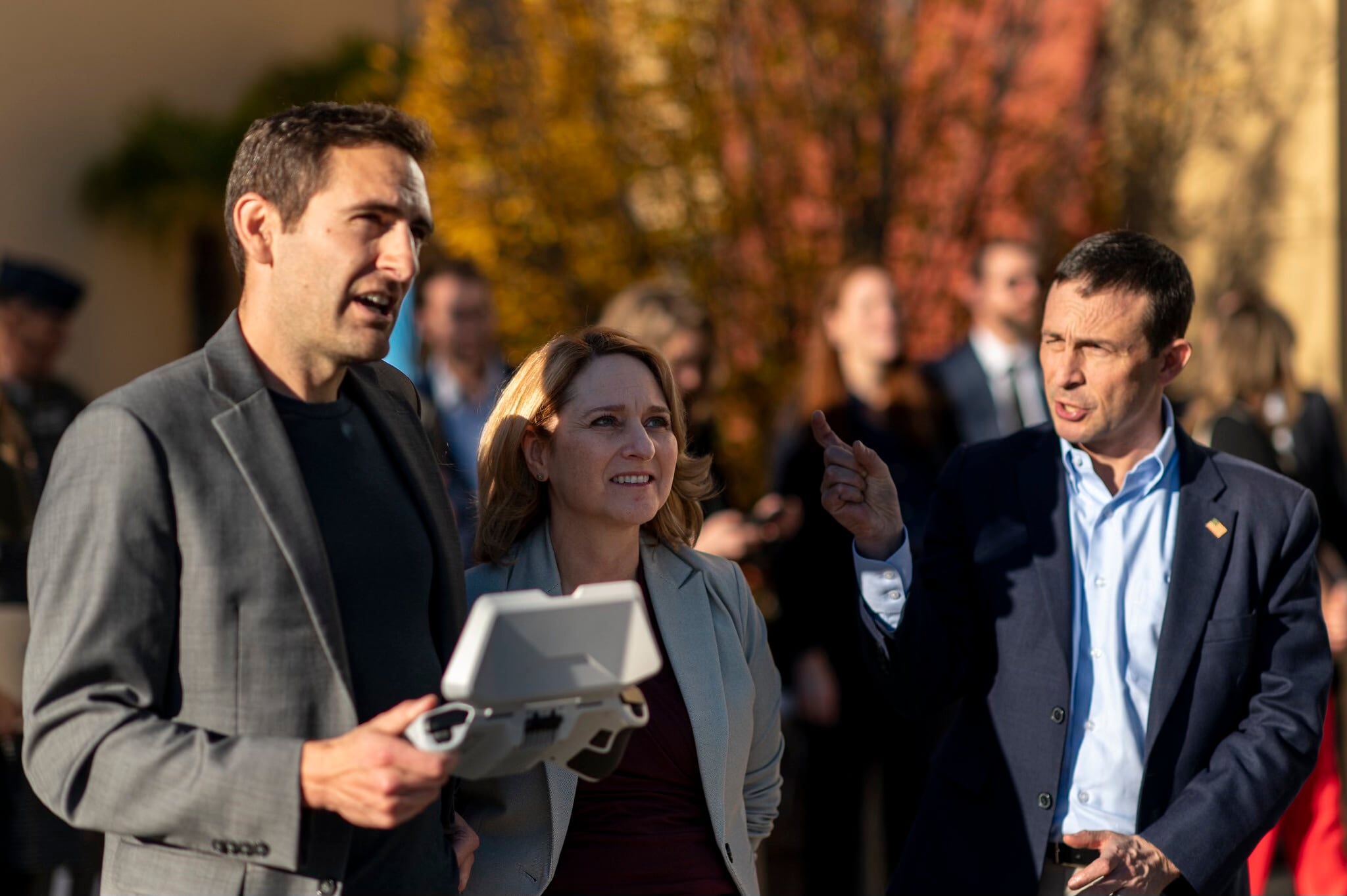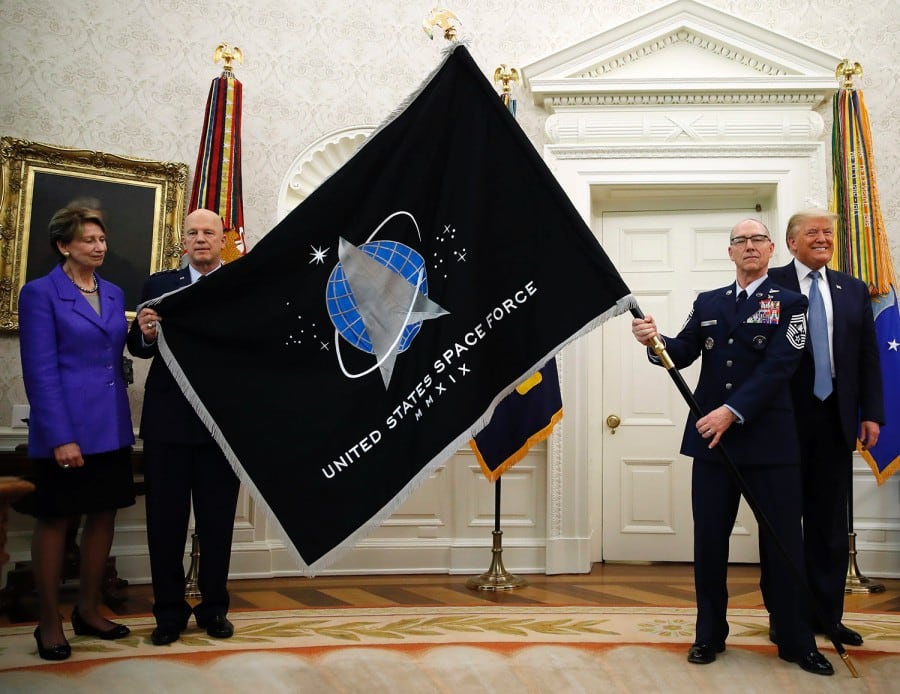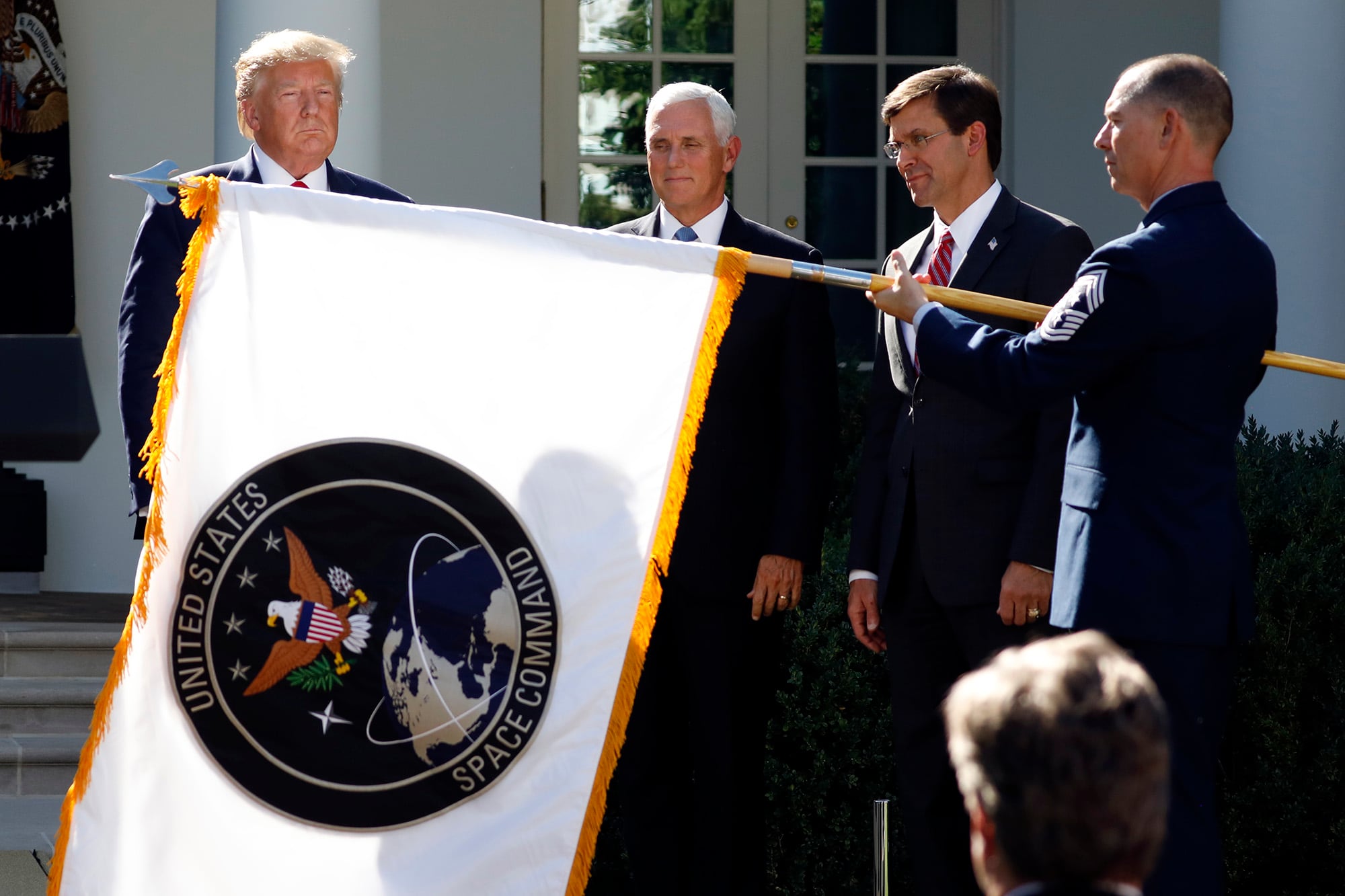The Space Force will play a “central role” in the Pentagon’s efforts to develop a homeland missile defense shield, or Iron Dome for America, according to the service’s top officer.
President Donald Trump issued an executive order in late January calling on the Defense Department to develop an “Iron Dome for America” — a more advanced version of Israel’s Iron Dome, designed to counter a range of missile threats, including hypersonic weapons.
The order highlights several space-based elements of this architecture that build on existing capabilities like the Missile Defense Agency’s Hypersonic and Ballistic Tracking Space Sensor program and the Space Development Agency’s Proliferated Warfighter Space Architecture, which includes a constellation of missile warning and tracking satellites.
Chief of Space Operations Gen. Chance Saltzman told reporters Monday that given the executive order’s emphasis on space systems, it’s natural the service would play a key role in its development, adding that the service has established an integrated planning team, or IPT, to explore options in response to the order.
“I think we have a central role to play,” Saltzman said. “We are leaning forward establishing this technical IPT to start thinking about it from an overarching perspective.”
The team is evaluating what systems the Space Force already has in development to support the president’s order and what capabilities it would need to build. From there, it’s exploring questions around technical feasibility and drafting cost estimates based on current programs, as well as its projections for what a more advanced architecture would require.
The IPT will likely finalize that early analysis in the coming weeks — a truncated timeline that will require “a lot of triage,” according to a senior Space Force official who spoke to reporters Monday on the condition of anonymity.
Once complete, the Space Force’s IPT work will be shared alongside similar analysis being conducted by U.S. Space Command, the National Reconnaissance Office and the Missile Defense Agency. Senior DOD leaders will then conduct a series of reviews to determine next steps, including what programs to start.
The official noted that the Space Force’s intent is to provide an honest assessment of where the technology stands today and what is feasible to deliver — particularly when it comes to fielding space-based interceptors.
“One of the worst things to do is bite off a technical challenge that you can’t solve in a reasonable cost frame, a reasonable time frame,” the official said. “We’ll be very forthright with, ‘Here’s where we think the technology stands.’”
Courtney Albon is C4ISRNET’s space and emerging technology reporter. She has covered the U.S. military since 2012, with a focus on the Air Force and Space Force. She has reported on some of the Defense Department’s most significant acquisition, budget and policy challenges.







